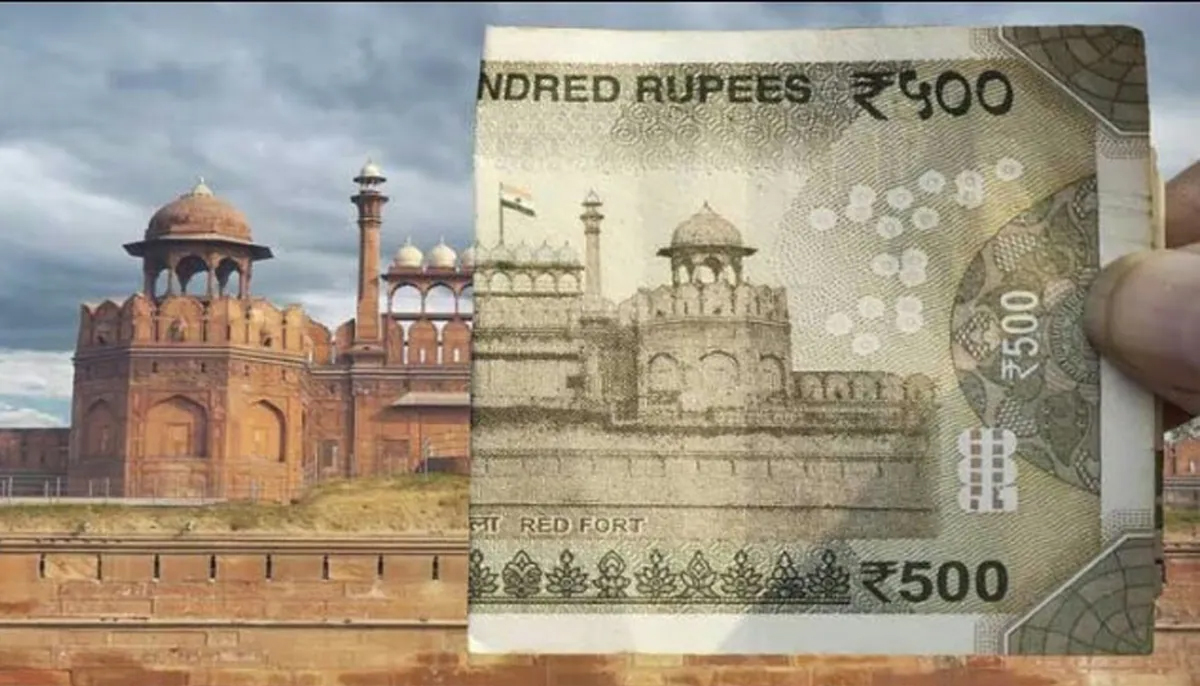Red Fort to Kailash temple: Viral twitter thread shows monument printed on Indian currency notes
Red Fort to Kailash temple: Viral twitter thread shows monument printed on Indian currency notes
Mangalore Today News Network / NDTV
May 05, 2023: Most of us have moved to online modes of payment in the past couple of years. However, there is a different feeling when one holds a currency note- maybe it’s the texture or maybe it is the physical presence of what is deemed as money that holds more significance in our lives. If one takes a close look at the currency notes, one will notice that the notes also exhibit glimpses into a country’s cultural and historical heritage. Our currency notes feature images of India’s famous monuments and landmarks. This was brought to light by an internet user who posted a thread exploring the historical sites printed on the notes.

A Twitter user, who has the handle Desi Thug, shared the same. "Historical Monuments and Events Printed on Indian Currency Notes," he said in the post. He shared a ₹ 10 currency note which features the Sun Temple in Konark against the backdrop of the temple.
Historical Monuments and Events Printed on Indian Currency Notes
— Desi Thug (@desi_thug1) April 28, 2023
1. Konark Mandir - 10 Rs Note pic.twitter.com/NWkdxk9pky
As per UNESCO, it is a monumental representation of the sun god Surya’s chariot and its 24 wheels are decorated with symbolic designs and it is led by a team of six horses. It was built in the 13th century.
3. Hampi Stone Chariot - 50 Rs Note pic.twitter.com/tVotvlc1Ee
— Desi Thug (@desi_thug1) April 28, 2023
The next post features the Kailash Temple in Ellora, which is depicted on a ₹ 20 currency note. The temple is one of the largest rock-cut temples in the country and is also a UNESCO World Heritage Site.
6. Lal Qila - 500 Rs Note pic.twitter.com/JxhDBtL54T
— Desi Thug (@desi_thug1) April 28, 2023
The Hampi Stone Chariot is seen on the fluorescent blue ₹ 50 note while the ₹ 100 currency note depicts Rani Ki Vav, located in Gujarat. The stepwell was built in 1063 by Rani Udayamati of the Chaulukya Dynasty.
The user also pointed out that the famous Sanchi Stupa, located in Madhya Pradesh, is printed on the backside of a ₹ 200 currency note. It was built by Emperor Ashoka in the third century BC. Meanwhile, the Red Fort is shown on the back of the ₹ 500 note.
Concluding the post, the user added that the largest Indian denomination note, ₹ 2000, does not feature a monument but a landmark event. The magenta note shows the Mangalyaan, India’s first successful Mars mission.
Since being shared, the post has amassed over 1.7 million views and 23,000 likes.
- Mangaluru: New India lucky scheme victims protest, demand justice and strict action
- Protesters vandalise toll plaza in Kasaragod over rule violations
- Karkala: Young man dies after falling from electric pole
- Approval granted for DPR preparation for Surathkal–BC road upgradation, NH-66 service roads
- Mangaluru: Another accused arrested in assault on migrant worker case
- Omni car overturns near Sullia; four injured, including child
- Government confirms Sankranti holiday on January 15 in Dakshina Kannada district
- Belthangady: Missing 15-year-old boy found dead in pond near home
- First rain of the year brings unseasonal thunder and lightning to Kadaba, Kukke Subrahmanya, and nearby areas
- High Court seeks state’s response on SIT probe into Dharmasthala deaths
- Four killed, two critically injured in head-on collision between KSRTC bus and car near Teerthahalli
- Trekking temporarily banned in Kudremukh, Someshwara and Mookambika forest areas to prevent fires
- Mangaluru: Rich tribute paid to Nitte Vinay Hegde
- Genius Chimpanzee ’Ai’ who could paint, count dies in Japan at 49
- Karnataka headmaster spends own savings for students first flight, wins internet’s love
- NORAD’s Santa tracker turns 70: How does Santa visit every country in just 24 hours?
- Video: Dubai Crown Prince shares dramatic moment lightning strikes Burj Khalifa
- No leave, rings on screen: Karnataka Bride engaged to Canada-based groom online
- Train stationmaster Cat ’Nitama’ dies in Japan, more than 500 attend funeral
- When a man arranged item dance for villagers as son cracked NEET: Papa backbencher rahe honge
- 75 years of the Indian Rupee: From Sher Shah Suri to today; a 500-year global journey
- IndiGo flight cancelled, techie couple attends own reception online
- Man outsmarts scammer using ChatGPT, viral post shows fraudster begging for mercy
- Love lives: Woman marries lover’s body after family kills him over caste
- Watch: Grandmother, 75, impresses social media with stunning dance moves and a flip
- HR88B8888 becomes India’s costliest car registration number at Rs 1.17 crore
- US freezes immigrant visa processing for 75 countries
- EAM Jaishankar speaks to Iranian FM as India advises nationals to leave Iran amid unrest
- Who is Francisco D’Costa? US court orders return of wrongfully deported Indian man
- 10 Indian fishermen arrested by Sri Lankan Navy for alleged poaching
- In North India, girls are asked to do only household chores: DMK MP Dayanidhi Maran sparks row
- Telangana horror: 300 stray dogs killed with lethal injections over 3 days; officials booked
- 22 killed, over 30 injured as crane collapse derails train in Thailand
- Siddaramaiah and Shivakumar briefly meet Rahul Gandhi amid Karnataka power struggle
- Centre asks Blinkit, Zepto, Swiggy to stop 10-minute delivery claims
- Germany announces visa-free transit for Indian passport holders
- Bengaluru: Two Bangladeshi nationals arrested for alleged illegal entry
- Hindu auto driver killed in Bangladesh amid surge in minority attacks
- CITY INFORMATION
- TRAVEL
- TOURIST INFORMATION
- HEALTH CARE
- MISCELLANEOUS




 Write Comment
Write Comment E-Mail
E-Mail Facebook
Facebook Twitter
Twitter  Print
Print 

